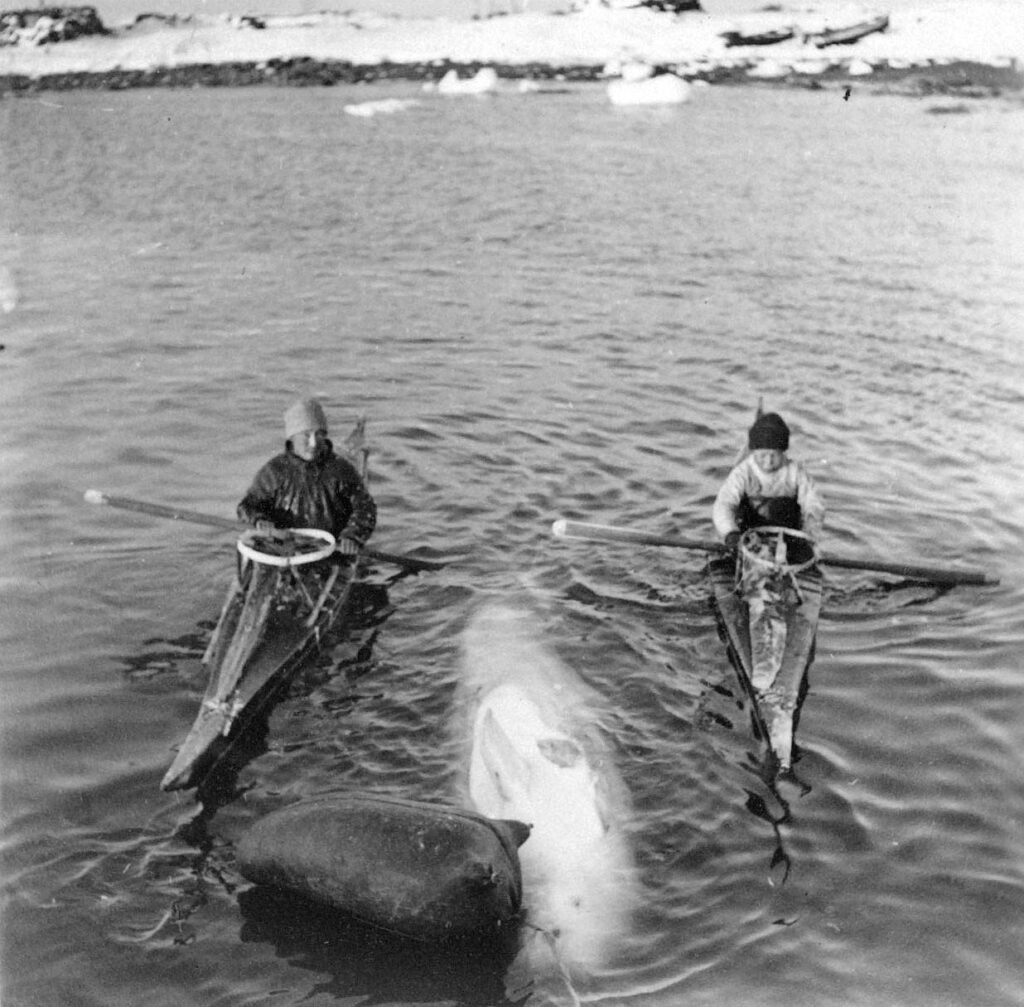Towing bladder/hunting float.

Towing bladder / hunting float keeping a hunted whale floating. Photo: Bodil Begtrup, Danish Arctic Institute – This important hunting implement, when hunting seals from a kayak is, despite of the name, usually made from the stomach of a narwhal or, if this is not available, from waterproof seal skin. Its length is usually 35-50 cm. […]
Rock carving of reindeer with intestines

Rock carving of reindeer with intestines. Alta, northern Norway. Photo: Karin Tansem, VAM, Copyright © World Heritage Rock Art Centre – Alta Museum (CC BY-NC-SA 4.0) – The large antlers indicate that this is a reindeer bull. The vertical lines in the front part of the torso may represent the ribs and the complex set of lines […]
